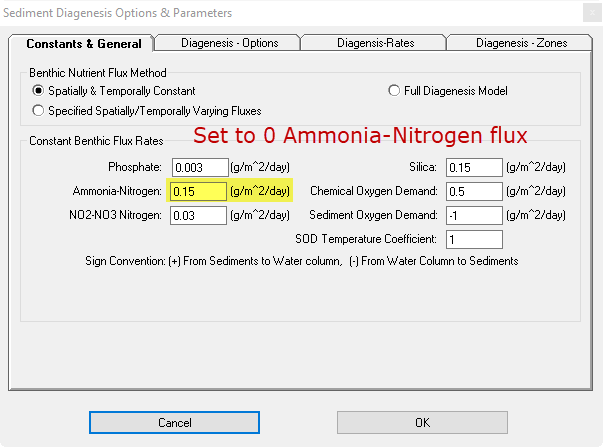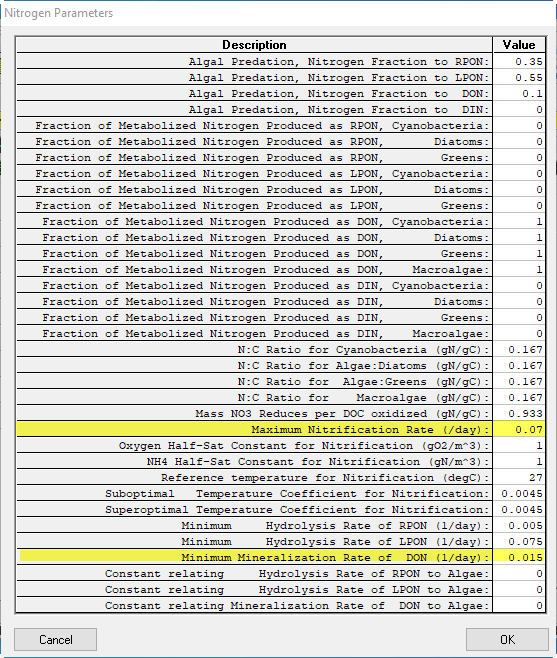Our current problem is this: the measured total nitrogen from the estuary to the inner bay drops by half, but there is no way for our model to simulate this drop. A few possibilities that come to mind are ① increasing denitrification in the estuary, but the model doesn’t seem to be able to account for microbial denitrification. ② Consider sediment in the model, sediment deposition in the estuary carries ammonia nitrogen, but I can’t seem to find a parameter between sediment and nitrogen in the model ③ There is partitioning in the model to set up organic nitrogen deposition, and then increase algal cycling in the estuary, but this action has very little effect on water quality when tried. By the way, we are using EE8.3
Thanks for all the answers and explanations.
Hi Fnan,
The Figure 1 that I attached shows the kinetic equation of ammonia in the EFDC water quality model. In this equation, the term BFNH4 represents the benthic exchange flux of NH4 between sediment bed and the water column. This flux is set as shown in the Figure 2 with a default value 0.15 (g/m2/day). This is the rate of NH4 release from the bed to the water column. Hence, one way to decrease the NH4 is to set this rate as 0 or even a “negative value” (with assumption that NH4 is bin to sediment and depose into the bed as you mentioned). Likewise, with NO2-NO3 Nitrogen flux.
Other ways to decrease the NH4 is to deal with other terms of the equation. For example, you can set a smaller value for KDON (related mineralization rate) or higher value for KNit (related to nitrification rate) as shown in Figure 3.
Kien


